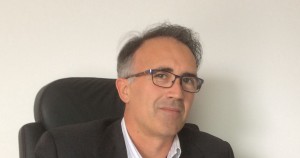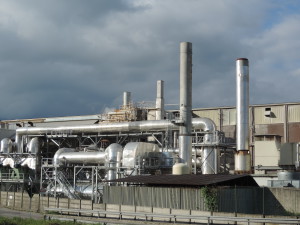An integrated eco recovery technology has been designed and installed for an existing plant of a paper factory of the Lucart group in Italy. The new plant will enable the paper mill to make savings, both directly, in terms of quantity of methane not consumed, and indirectly, regarding the reduction in CO2 emitted.
The technological update of the plants and energy efficiency of the factories are ideas which are relevant for any paper mill, but even more so in a country like Italy where energy consumes about a third of the total costs. However, considerable investment is needed. Today there is a further opportunity, to update an existing plant. And this is what the Lucart Group in Castelnuovo di Garfagnana, in the province of Lucca (Italy) has done. We are talking about it with Franco Pasquini, engineering director of the group.

Advanced cogeneration
It is Pasquini himself who tells us that when Lucart acquired the Castelnuovo site in 2012, they decided to intervene to optimise the energy balance of the factory. A series of studies showed that the solution able to guarantee the best result would be a cogeneration plant with integrated eco recovery, the creation of which would be entrusted to Valmet. A solution which was not yet very widespread in the paper sector and characterised by major customisation.
«The plant is an advanced cogeneration plant» explains the director, «in which the smoke produced by the combustion of the methane in the gas turbine – which in a traditional cogeneration plant would be used in a boiler to produce vapour – is sent directly to the drying hoods of the paper machine and the smoke released from the hoods is funnelled to a recovery boiler which transforms the heat contained in the smoke into vapour. Finally the residual energy from the smoke leaving the recuperator is used in a second heat exchanger to produce hot water, which is also used in the process. In this way the thermal energy needs of the factory are met by optimising the use of the primary fuel.
For the paper mill the intervention, which cost about 4 million euros, has brought about important and significant changes to the layout and structure of the pre-existing plant.
The complexity of the intervention, explains Pasquini, in effect is due to the enormous volumes involved: «the air system of the hoods and ventilators supplying the hoods needed to be replaced; the connections to the new recovery boilers were complex and difficult for the space available, for the considerable sizes required to move more than double the quantity of air mass and for the technical requirements that the measuring and checking instruments need. The smoke from the Turbogas must not have counterpressures which obstruct its flow. It is funnelled to the drying plant through a sizeable mixer, 7 metres high and 4 in diameter, connected to 1.5/2 metre pipes; the air flows are moved by ventilators».
The management of such sizeable masses has always created caution and indecision in those who manage production. A furnace installed on the hood, on the other hand, is a simpler and more technologically stable system.
Intervention on the ground
Beyond the technical complexity of the creation of such a plant, for which Valmet has specifically studied custom-made solutions, the most important challenge was the need to adapt to the available space and size already present in a plant with pre-existing cogeneration and thermal balances. «This», continues Pasquini, «has made the design and creation of the plant particularly complicated». Even more so if one considers that the intervention took place without interrupting the factory’s production, only necessitating a brief stoppage of about ten days. For this reason «some decisions regarding details were only taken at an advanced stage of the work. We could not carry out major simulations at a pre-design phase and at the launching phase we have had to test all the operating sequences directly on the ground».
The adaptation of integrated eco recovery technology to an existing factory presented a series of unforeseeable difficulties in the preliminary phase, «it was an important part of the fine-tuning of the project. The design took about eight months, whilst the installation needed ten months, during which we found and optimised many solutions which in the design phase we could not completely take into account and tackle. A key factor of the success was the contribution of the service suppliers – Valmet was the main one – and the collaboration which we managed to create between their engineers and our project team.
From the authorisation and bureaucratic point of view, on the other hand, there we no particular difficulties. «Certainly being an innovative and unique plant, we had to work alongside the GSE (National Grid operator) and Ministry of Economic Development to define a suitable model which allowed us to access the Tee (Energy Efficiency Certificates)». The owners estimate that they will manage to obtain about 7,500 white certificates by the end of 2015.
Expected results
The new plant will enable the paper mill to make savings, both directly, in terms of quantity of methane not consumed, and indirectly, regarding the reduction in CO2 emitted. «Based on the first few months of the plant’s operation, we have estimated that, by the end of 2015, we shall have reduced the methane by 3.5 million standard cubic metres, which corresponds to about 15-20% or the methane requirements of the factory, a reduction of 7 thousand tonnes annually of CO2 emitted into the atmosphere and a reduction of about 3.5 tonnes of NOx each year. A goal of significant energy efficiency».
With this intervention the Castelnuovo paper mill has reached a good energy balance. Not only that, but Pasquini explains how the intervention has had an important impact also on the factory in general, «it has given us the means and opportunity to renew the plant which, for the most part, has been improved and updated with technologies which are available today on the market. All the converting lines have been replaced and the paper machine has been updated, brings improvements in both quality and technology. The optimisation of energy consumption, ultimately, has been the completion of the circle».
The idea is to repeat the experience in other factories of the group. «At the moment we are collecting data from the plant which has just started up; we want to be certain about the impact on both management and energy results and we are trying to confirm in detail all the project’s strengths and any possible improvements. Certainly this type of technology cannot lead to the same result in all the paper mills, because the energy and gas needs of the specific factory must be analysed. Energy balances, number of machines and energy sources used must be considered and, based on the type of situation, more or less favourable results will be obtained. In practice the plant can be replicated but not the results, which depend on the configuration of the factory.
What does the market think of it?
«Finding ways to allow us to produce energy with the least environmental impact is linked to the objectives of eco-sustainability consistency which we, as a business, are following, amongst which is that of producing paper in an environmentally-friendly way and making the best use of resources,» states the director. And Lucart has made energy efficiency, he explains, a particular focus, «it is by no coincidence that we have been the first in the tissue sector to adopt cogeneration. The market recognises our green side; even at an international level awareness about this subject is increasing and being eco sustainable is a characteristic which is increasingly taken into account».
In any event, the choice of finding the ideal energy balance for one’s own factory is not only necessary, but is also considered to be an excellent opportunity to improve, particularly in Italy. «We live in a constantly difficult situation regarding competitiveness with other countries» concludes Pasquini, «but we can overcome this condition technologically, making up the gap through investments which, amongst other things, also contribute to environmental sustainability.
More than 60 years of experience
With a production capacity of 300 thousand tonnes a year and a consolidated turnover of about 400 million euros, Lucart Group has six factories, of which five are in Italy and one in France, with a total of ten paper mills – one of which is for airlaid paper – and fifty-four converting lines. Lucart spa, at the head of the multinational group, is a company which began in the province of Lucca in 1953. It is one of the main European producers of mono-glazed paper and tissue products.
The paper mill of Castelnuovo di Garfagnana, acquired in 2012 from the American Georgia-Pacific, mainly makes products for the brand Tenderly. It has a production capacity of 50 thousand tonnes a year, 4 converting lines and employs 125 people.
***
The supplier’s opinion

The project was a significant challenge also for the service suppliers. «There were many difficulties» states Raffaele Malutta, product manager of Valmet, «from the initial design, with an existing turbine which was rather small for the machine production and which did not allow for margins of error in sizing, to managing to find a layout which could hold all the equipment needed in a small space, without compromising the quality of the size of the gas outputs in the various branches, which need long straight stretches for pipes. For the start-up it was also necessary to reconcile the production requirements of the paper mill with those of tests of equipment, instruments and functionality of the control system». All in a very limited period of time.
A similar experiment was also carried out in the paper sector in Italy at the end of the 1990s, explains Malutta, but it was a reduced system compared with that at Castelnuovo.
Since then Valmet has set up nine plants which allow paper to be dried using only the smoke from a turbine, with the hood furnaces extinguished; whilst another five will soon be set up.
«This type of plant enables a reduction in energy consumption and emissions and allows the maximum benefit to be drawn from the Tee incentive system in effect in Italy. Our hope is that the excellent results and performance of the systems installed can really make integrated eco recovery take off.

